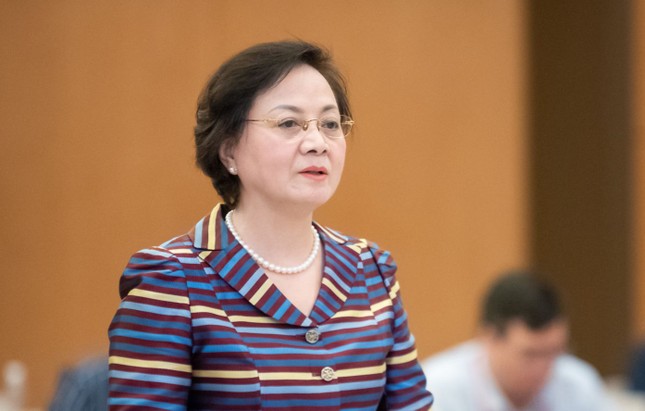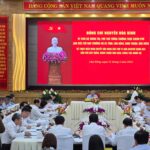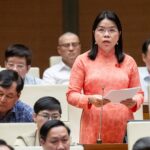Temporary retention of officials, civil servants, and public employees
Minister of Home Affairs Pham Thi Thanh Tra, Deputy Head of the Steering Committee for the Arrangement of Administrative Units at All Levels and the Building of a Two-tier Local Government Model, has just signed a document sent to the People’s Committees of provinces and centrally-run cities on temporary orientation for personnel arrangement during the administrative unit arrangement and building of a two-tier local government model.
Accordingly, in the arrangement and merger process, the number of officials, civil servants, and public employees (excluding those who are rotated according to Conclusion No. 154-KL/TW dated May 17, 2025, of the Politburo) and current contracted laborers will initially remain unchanged. They will be arranged to work at corresponding agencies, organizations, and units or at the commune level.
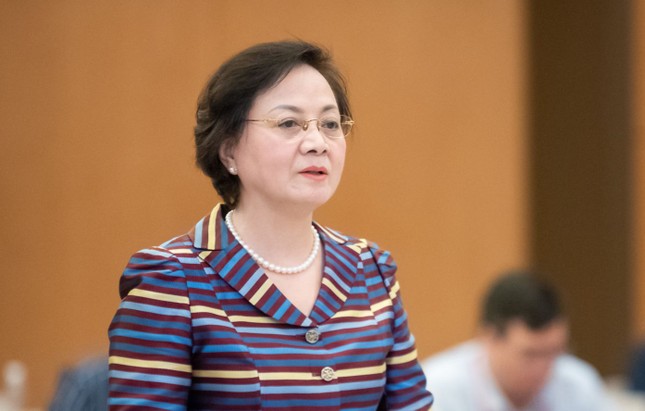
Minister of Home Affairs Pham Thi Thanh Tra. Photo: QH
Subsequently, personnel streamlining will be carried out in conjunction with restructuring and improving the quality of the team, ensuring that within five years, the number of personnel will basically comply with regulations.
The Minister noted that during the arrangement of administrative units and the two-tier local government model, officials, civil servants, and public employees who wish to retire early or resign, or who fail to meet job requirements and qualifications, will be allowed to retire in accordance with policies by the local Party committees and authorities.
In case officials, civil servants, and public employees wish to retire immediately before the two-tier local government model comes into operation, the local Party committees and authorities will consider and decide to let the civil servants and public employees retire immediately and still receive their salaries until the time they are entitled to policies and regimes according to Decree No. 178/2024 (amended and supplemented in Decree No. 67/2025/ND-CP) from July 1.
About 32 personnel for each commune-level unit
Regarding the personnel of officials and civil servants, the document states that for the 11 administrative units at the provincial level that do not undergo mergers, based on the assigned personnel quota, they will proactively arrange and assign officials and civil servants to ensure the requirements of tasks.
For the 23 administrative units at the provincial level that are formed through mergers and consolidations, it is possible to combine restructuring and improving the quality of the team. Basically, after five years, the total personnel will comply with the regulations of the competent authority.
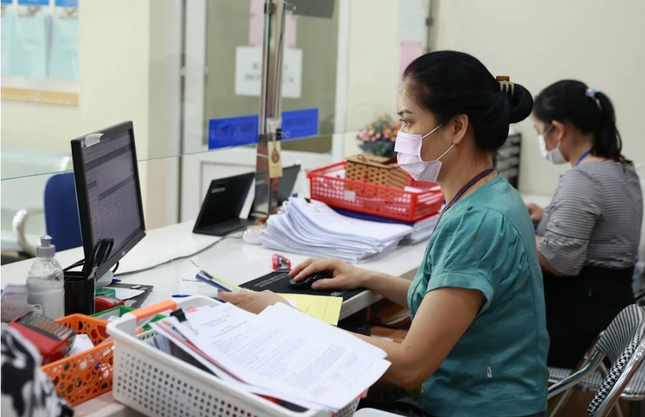
On average, each commune-level unit is arranged with about 32 personnel (Illustrative image)
After the arrangement is stabilized, in 2026, based on the guidance of the competent authority on the criteria for determining the personnel quota and the framework for the personnel of agencies, organizations, and units in the political system, localities will proactively coordinate, balance, and decide on the personnel quota for each agency.
Regarding the personnel of officials and civil servants at the commune level, initially, the number of officials and civil servants at the district level (excluding those who are rotated according to Conclusion No. 154-KL/TW dated May 17, 2025, of the Politburo) and the current commune-level officials and civil servants will be retained. At the same time, it is necessary to review and streamline the personnel of commune-level officials and civil servants who do not meet the standards, ensuring that within five years, the number will basically comply with the Government’s regulations.
The Steering Committee clearly states that the temporary framework for the personnel of a commune-level government unit is about 32 people (not including the personnel of the Party, mass organizations, and the Military Command of the commune level).
This includes: The leadership of the People’s Council includes one chairman and one vice chairman, one of whom is a full-time official; the leadership of the People’s Committee includes one chairman and two vice chairmen.
The two committees of the People’s Council include two full-time heads, two deputy heads, and two civil servants; the three specialized departments of the People’s Committee – each department has two leaders and full-time managers. The civil servants of the specialized departments have four civil servants per department (a total of 12 civil servant quotas).
The Public Administration Service Center has one vice chairman of the People’s Committee as the director, one full-time deputy director, and five civil servants.
Regarding the personnel of public employees in public non-business units, based on the arrangement plan, the restructuring of public non-business units by industry and field at the new commune level, localities have the responsibility to arrange the personnel quota of public employees who are paid from the state budget within the total personnel quota assigned by the competent authority.
“Prime Minister: Exploring an Expansion of Social Housing Policies for Larger Families”
“The Prime Minister has suggested implementing policies to encourage childbirth, such as expanding social housing policies for larger families and vulnerable individuals with children. This proposal aims to address the challenges faced by those with larger families and ensure they have adequate housing support.”
Vice-Prime Minister Nguyen Hoa Binh: Putting the Common Good First
Vice Prime Minister Nguyen Hoa Binh has instructed all localities to ensure the uninterrupted execution of tasks during the reorganization and merger process.
Supporting 2,582 Hai Duong Officials in Their Transition to Hai Phong
The Hai Duong Provincial Party Committee has directed the provincial People’s Committee to coordinate with Hai Phong city in formulating supportive policies for the 2,582 officials, civil servants, and employees who will be relocating to Hai Phong post-merger. These policies will encompass transportation, housing, and income support to ease the transition for those affected by the administrative shift.

